We got a few questions on the PoE splitters we were using in our recent The Ultimate Cheap 2.5GbE PoE Unmanaged Switch video. In that video, we had one of the 2.5GbE router boxes powered by these PoE splitters, since they do not have native PoE inputs. We also have several of the fanless Intel J4125 4x i225 2.5GbE devices powered by these. For a quick weekend piece, we introduce the product known as “POE Made in China” because that is the label on the box.
PoE Made in China PoE Splitter Overview
The unit itself is labeled “POE” on top of it, while the box’s label is “PoE Made in China”. Let us just say at the outset these are not going to be perfect devices, but they are inexpensive and we have ~30 of them in use right now between Patrick and my labs.
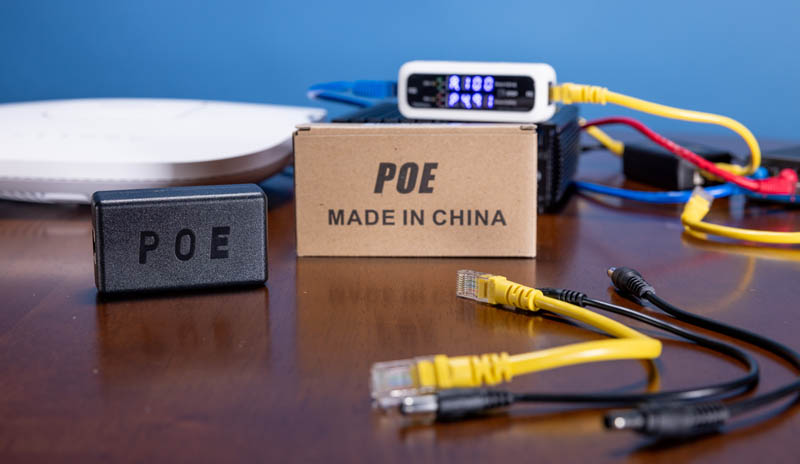
The unit is a 48V PoE Splitter. The Model is the LS-POE-1220MK. What is interesting is that we found this unit on Amazon (affiliate link) for $0.65 less than the $13.15 it is on AliExpress.
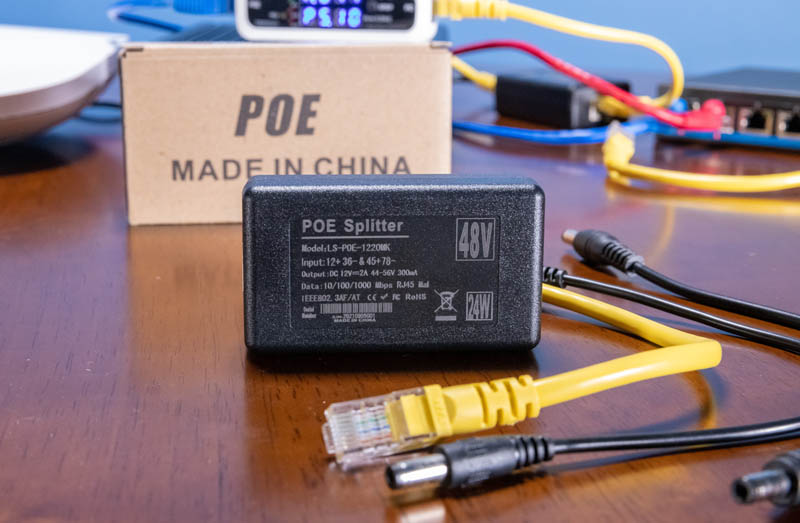
On one side of the unit, it accepts a PoE input with power and data.
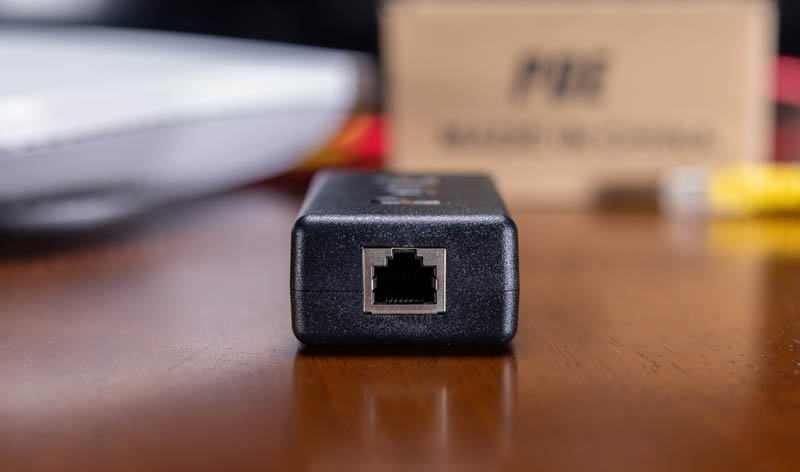
On the other side we get a RJ45 jack and a DC output.
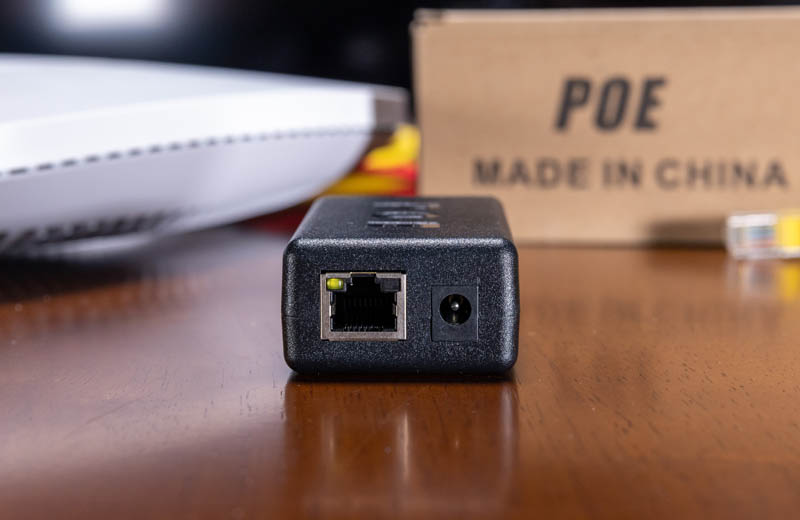
With the unit we get two different DC cables as well as a short RJ45 cable. Many of these splitters have fixed ends, so we use this because it is a bit more flexible if you need to change cable lengths later. The 12V DC output is useful for powering a number of devices.
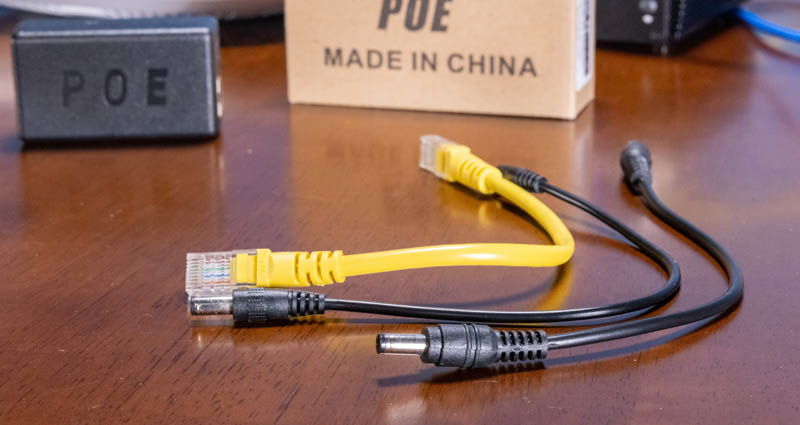
Here is a shot of this powering the fanless Atom virtualization/ firewall node from the video and going through the TRENDnet Inline PoE Tester TC-NTP1.
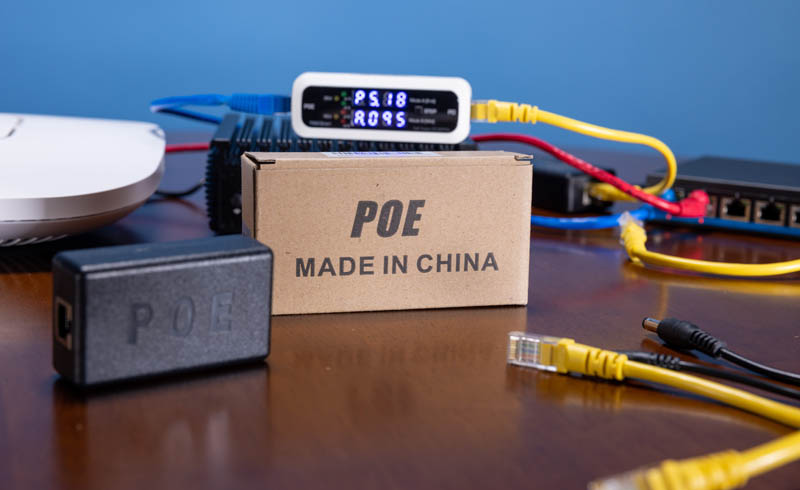
If you want to see it in action, here is the video mentioned:
We show the entire setup later in the video during the PoE testing. This is only a 24W unit, so it will not power higher-power PoE++ devices. Still, for around $12.50 it works reasonably well.
Final Words
We are always suspect of the quality of these devices, especially at this price point. Still, for lab purposes and for powering low cost devices, this is a decent option that we use a lot of. At some point, it just makes sense to have one or two of these little splitters around. We probably would not recommend them for the N6005 units we reviewed. The N5105 is more borderline. For many lower power devices, including little nodes, you can power nodes on this little splitter. The price and packaging may seem like this one is not great but having run these for many months with so many units, perhaps they are worth having in the bag for $12.50.

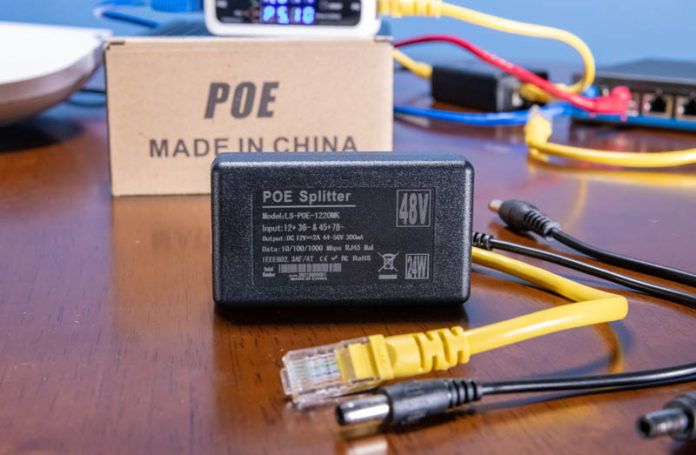



Note that some of the cheap ones are only 100Mbps, so pay attention when you order them.
It would be useful to include pictures of the circuitry inside like you do for servers and such. Is what looks the same on the outside always the same inside? How hot do they run?
Since taking each one apart may be destructive, weighing them to see whether units from different orders have the same weight might be interesting.
It’s definitely worth checking inside them. I got a bunch with a micro USB connector on them for powering a Raspberry Pi, but they only put out 5V exactly which was too low for a Pi. I figured out how to modify them to increase the voltage, and got them outputting 5.3V and that made the Pi very happy. So I bought some more ready to modify as they were so cheap, but they’d already changed them at the factory and now they were outputting 5.2V so I didn’t have to modify them after all!
(I did a write up of the procedure on the Raspberry Pi forums if anyone is curious, it should show up if you Google for “raspberry pi ls-poe-bs0525”)
Sooooooo, did you actually *test* it?
“It powered up my ” is not testing. Get an electronic load and draw 2000 mA from it for hours and see what happens.
I have a number of chinese power bricks that claim “2A”, but fall over in minutes when loaded at that current. It might work fine, it might do 2A for a minute or two, or it might overcurrent cut-off far earlier.
There’s literally a PoE tester on one in the photos. Those testers can simulate PoE devices to test load. I don’t get why that’s a question?
@girish k: They just did a review of that PoE tester, it can’t simulate PoE devices or test load, it only measures the current passing through it: https://www.servethehome.com/trendnet-inline-poe-tester-tc-ntp1-review/
An electronic load as suggested by @fake-name is an excellent idea to test the reliability of the PoE source.
Malvineous: Isn’t that unit that they tested having “T” mode as well that’s testing the power of a device? Pass thru is only that “I” mode.
@Nate77: They don’t say in the review but since the device doesn’t have a large heat sink or fan, or any apparent way to configure how many watts or amps it should try to use, I wouldn’t expect it to test the load. Likely it just tests various 802.3at/af negotiation options to see what the source equipment supports. Even basic USB2 load testers have large fans and heatsinks on them to dissipate the heat they burn off and they are only dealing with half the available PoE power, so a PoE load tester would have to be much larger to accommodate the cooling required.
Since this splitter’s rated for 1 Gbps, how did you know it would work with 2.5 Gbps?
In some reviews on amazon I see that this splitter generates a lot of RF interference. Can this be clarified
with that splitter there is link on 2.5Gbe?
I can confirm 2.5Gbe did work for me.
Even in combination with 100m Cat6a cabling, and well I didn’t try anything longer.
But with other Gigabit PoE Splitters like TPLink TL-POE10R or the one from my Axis video camera 2.5Gbe worked too, so that’s nothing special.